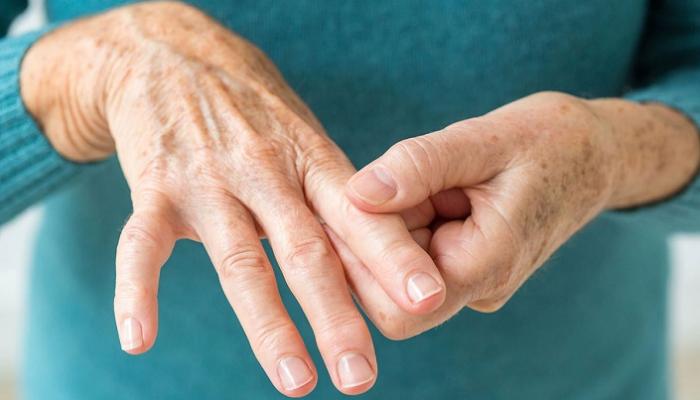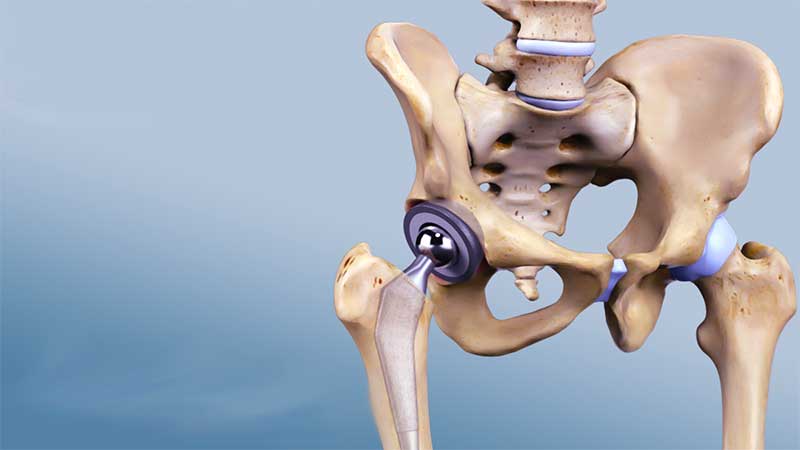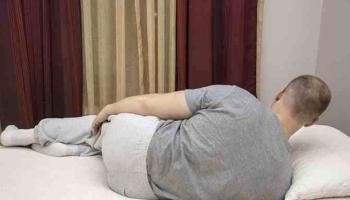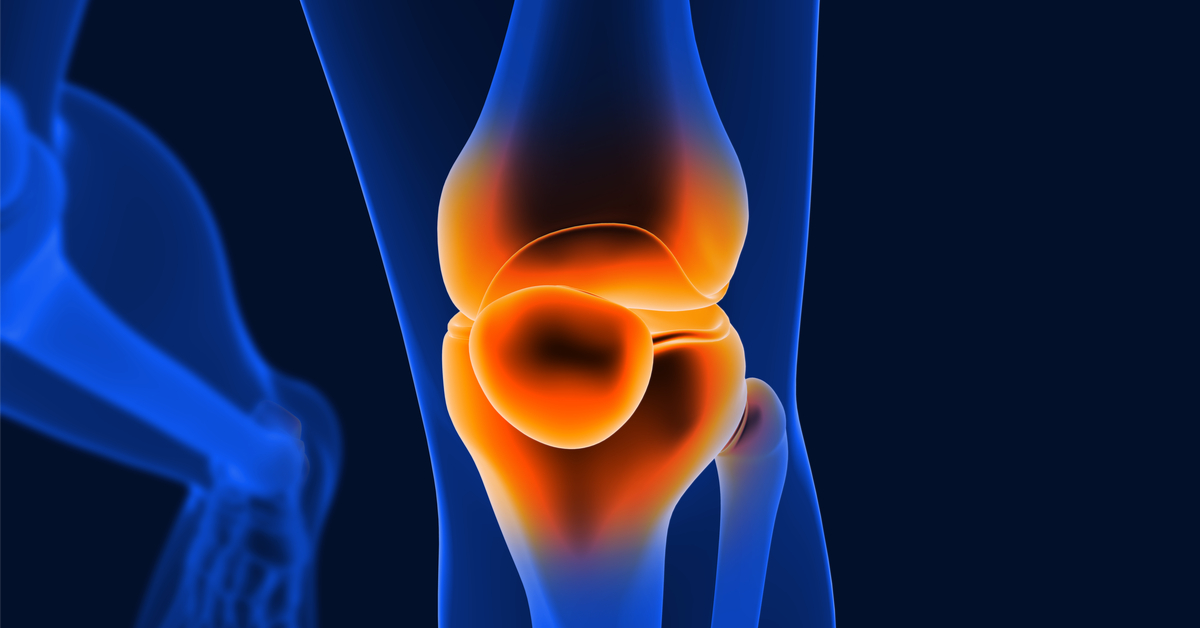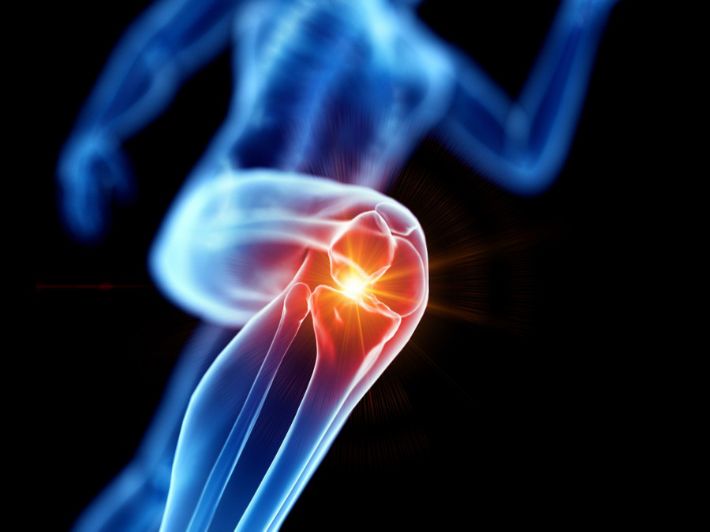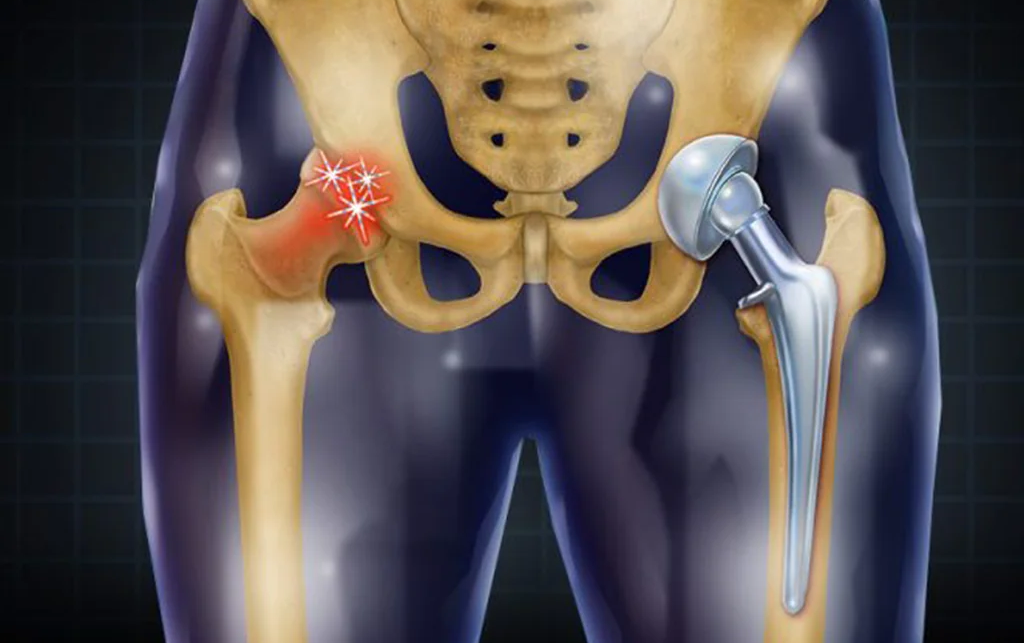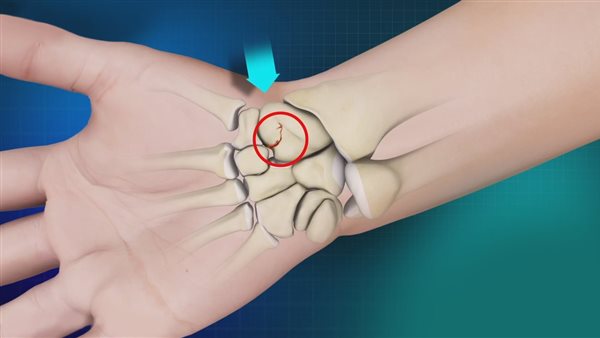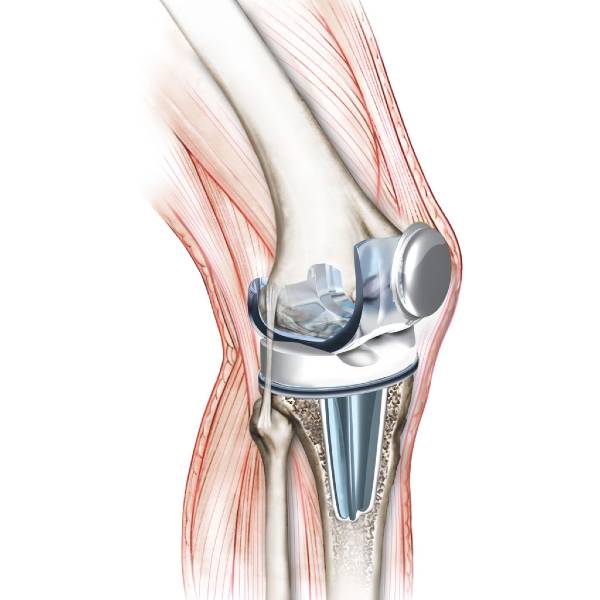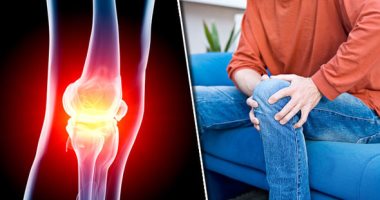Information about the Best Doctor for Hyperhidrosis Treatment in Egypt and the Symptoms of the Condition!
The Best Doctor for Treating Hyperhidrosis in Egypt: Perhaps, someone close to you has experienced severe leg pain and tingling sensations that have left them unable to move or carry out their activities. After a medical examination, the diagnosis revealed that they have hyperhidrosis. In our following article, we will provide you with all the information you need to know about this condition, its key symptoms, treatment options, and the best specialist doctor for hyperhidrosis in Egypt. So, continue reading to find answers to all your questions regarding this matter.

The Best Doctor for Treating Sciatica in Egypt
The pain experienced by individuals suffering from sciatica is often intense and unbearable. Therefore, the most important thing a patient seeks is a skilled and proficient doctor who can help relieve their pain. In this article, we recommend one of the best orthopedic doctors specializing in treating sciatica, Dr. Amr Amal, a consultant in orthopedic and joint surgery at Ain Shams University. Dr. Amal is known for his great skill and extensive experience in treating various sciatica cases, effectively responding to different treatment methods. You can easily communicate with him and trust his excellent communication style to make you feel more comfortable and confident in your treatment. You can contact Dr. Amr Amal for a consultation regarding your symptoms by clicking on this link.
What Is Sciatica?
Sciatica, also known as sciatic nerve inflammation, is severe pain that affects the lower back and lower extremities of the body, accompanied by tingling and numbness sensations that extend along the leg. It results from inflammation and irritation of the sciatic nerve, a nerve that extends from the lower part of the spinal cord down the back, leg, and foot. The sciatic nerve is the largest and longest nerve in the body, about the thickness of a finger, located in the lower part of the spinal cord and down to the foot. Many people experience sciatic nerve inflammation due to various reasons, and while the pain can be severe, most cases recover within a few weeks.
Causes of Sciatica
Sciatica occurs due to one of the following reasons:
Inflammation of the sciatic nerve or its surroundings. Herniated disc, which is a major cause of sciatica. Spinal stenosis, which results in pressure on the sciatic nerve, causing severe pain. Inflammation of the sacroiliac joint. The presence of a tumor or cancer in the spine or sciatic nerve. In some rare cases, tumors can affect the nerve root in the lower back, leading to sciatica symptoms. Injury to the spine. Piriformis syndrome, which is the spasm or injury of the piriformis muscle in the buttocks, connecting the spine to the thigh. If this muscle is injured or spasms, it can compress the sciatic nerve, leading to sciatica symptoms. Spinal disc herniation occurs when a disc’s jelly-like center pushes against the outer ring, often referred to as a slipped or ruptured disc.
What Is the Difference Between Sciatica and Disc Herniation?
As mentioned earlier, sciatica is inflammation of the sciatic nerve that results in severe pain in the lower back, extending down the legs and sometimes to the foot. On the other hand, disc herniation, also known as a slipped or ruptured disc, involves the protrusion of the jelly-like substance located within the discs between the vertebrae of the spinal column. This protrusion exerts pressure on the surrounding nerves, causing pain that typically starts in the lower back and continues down the leg.
One of the key differences between sciatica and disc herniation is the duration of treatment required. Sciatica often responds to relatively short-term treatment and improves with time, while disc herniation may require a longer recovery period. For more detailed information on disc herniation and the differences between the two conditions, we recommend reading the following article.

Latest Sciatica Treatment Methods
There are several methods for treating sciatica that provide excellent results and help relieve pain, facilitating recovery. Below, we will explore these methods in more detail:
- Physical Therapy for Sciatica Treatment
In cases of mild to moderate sciatica pain, physical therapy is often recommended. A physical therapist will create a treatment plan that includes exercises and closely monitors the patient’s progress. These exercises may include stretching, strengthening, and conditioning exercises. Light activities such as walking, swimming, aquatic therapy, or hydrotherapy can also be beneficial. Physical therapy aims to:
- Stretch tight and tense muscles, such as those around the knee.
- Strengthen the spine, lower back, buttocks, abdomen, and hips.
- Stimulate the exchange of fluids and nutrients within the body.
- Cupping Therapy for Sciatica Treatment
Cupping therapy, also known as “Hijama” in Islamic medicine, has been proven effective in alleviating the pain associated with sciatica. This therapy involves creating suction on the skin’s surface using cups, often made of glass, plastic, or bamboo. It increases blood flow to the affected area, improves circulation, and relaxes the surrounding muscles.
Research conducted in Pakistan on individuals suffering from severe sciatic nerve pain due to disc herniation has shown that cupping therapy was effective in over 67% of the patients, providing relief without significant side effects.
- Radiofrequency Ablation for Sciatica Treatment
Radiofrequency ablation, also known as radiofrequency neurotomy or RF lesioning, is a minimally invasive procedure used to treat lumbar facet joint pain and sciatica. During this procedure, an insulated needle is inserted to deliver radiofrequency energy to the affected nerves. This creates heat that interrupts the pain signals, providing pain relief. Radiofrequency ablation has shown better results and fewer side effects compared to electrothermal therapy.
- Medications for Sciatica Treatment
Non-surgical treatment options for sciatica include medication. Over-the-counter pain relievers, such as nonsteroidal anti-inflammatory drugs (NSAIDs), can be taken without a prescription. If these do not provide the desired relief, a healthcare provider may prescribe other medications, including:
- Muscle relaxants like cyclobenzaprine, which reduce acute back pain and associated muscle stiffness.
- Oral steroids, such as prednisone, to reduce acute sciatic nerve inflammation.
- Opioid analgesics for severe pain, such as tramadol, which is used in extreme cases.
- Tricyclic antidepressants, such as amitriptyline, are used to relieve chronic sciatica pain by decreasing the brain’s perception of pain signals.
- Anti-seizure medications like gabapentin, often used alongside antidepressants, help alleviate chronic sciatica pain by reducing nerve pain signals.
It is important to note that all of these medications should only be used under medical supervision to prevent potential side effects and misuse.
Sciatica Treatment Injections
There are some cases that require corticosteroid injections around the area surrounding the sciatic nerve root. These injections work to reduce pain by inhibiting inflammation around the irritated nerve. Typically, you will find that the pain improves and the condition recovers within a few weeks of treatment, while the effects of the injection may wear off after several months. It’s essential to consider that the use of corticosteroid injections should be limited due to their potential serious side effects with repeated use.
Sciatica Treatment with Massage and Spinal Alignment
Massage in the lower spine, pelvis, thigh, and leg areas can help alleviate pain and reduce symptoms of sciatica or eliminate them altogether. This is because it improves blood circulation, relaxes tense muscles, and releases endorphins, which act as natural pain relievers.
On the other hand, spinal alignment is a form of manual therapy performed by specialists in manual therapy to improve the alignment of the spine. This procedure helps treat sciatica resulting from disc herniation or spinal stenosis. It results in improved spinal movement and function, reduces pain, and aids in stimulating natural healing.

Sciatica Treatment with Surgery
If all previous non-surgical treatment methods mentioned above fail, the doctor may resort to surgical treatment as a last resort if non-surgical treatments have failed to relieve sciatica pain or if there is neurological weakness, such as leg weakness.
On the other hand, some cases require surgical treatment as the initial option, as is the case with cauda equina syndrome. In this condition, there is urinary and fecal incontinence, tumors, and sciatica affecting both legs and pelvic area infections that do not respond to medication. The primary surgical options available for treating sciatica in both men and women include:
- Laminectomy: This surgery involves partially or completely removing the lamina to widen the spinal canal or relieve pressure on the spinal cord and nerves. Laminectomy is a common surgical procedure used to treat sciatica caused by lumbar spinal stenosis.
- Discectomy: This surgery is one of the most commonly used surgical procedures for treating sciatica. In recent times, it has been performed using a microscope to improve surgical visualization. It is also known as microdiscectomy, and it is a minimally invasive procedure. It involves making a relatively small incision and removing the part causing pressure on the sciatic nerve. This surgery has a high success rate and provides permanent relief from sciatica resulting from lumbar disc herniation. Approximately 86% of patients do not experience sciatica pain after this surgery.
Benefits of Non-Surgical Interventional Treatment
There is no doubt that non-surgical interventional treatment has many advantages, as follows:
- It is performed using local anesthesia.
- It is carried out through a relatively small incision with no significant scarring.
- It does not involve the removal of any part of the spine.
- It does not lead to disruption of back muscles.
- It typically takes only about 20 minutes.
- It does not result in fibrosis or adhesions in the neural canal.
- It is performed from outside the neural canal.
- It does not require surgical sutures.
- It helps maintain dynamic stability of the spine.
- Patients can return to work within a week, unlike surgery that requires general anesthesia and the removal of parts of the spine. Surgery can lead to fibrosis in the neural canal, potentially causing pressure on nerve roots, making it challenging to treat and having a significant impact on the patient’s activity and daily life.
How to Get Rid of Sciatica Pain?
“Get rid of pain, numbness in the legs, and other annoying symptoms with the innovative personalized treatment provided by Dr. Amr Amal for sciatica cases.”
There are several ways for patients to alleviate the pain caused by sciatica, including the following points:
Stretching Exercises: Neglecting stretching exercises can make a patient’s tendons inflexible and tight, increasing the intensity of pain. Therefore, performing stretching exercises helps alleviate pain and also helps dilate blood vessels in the painful area and relax them. The exercise can be done by sitting on the edge of a chair, extending one leg on the ground, leaning forward while keeping the shoulders and head in a straight position. It is recommended to stay in this position for 30 seconds and then return to the starting position, repeating the exercise multiple times.
Application of Cold or Warm Compresses: This is one of the easiest ways to relieve and eliminate sciatica pain. To apply a cold compress, wrap a piece of ice in a towel and place it under your back for 15 minutes. This helps reduce inflammation and pain. However, if the patient feels numbness in the area, they should stop using the cold compress. Warm compresses can be applied by using an electric heating pad or a warm water bottle on the lower back for 10 to 20 minutes. This helps dilate blood vessels, promote better blood flow, and relax the muscles. Patients can alternate between using cold and warm compresses and repeat this multiple times throughout the day until they feel improvement.
Relaxation Exercises: Many doctors recommend their patients to practice relaxation exercises, including deep breathing, yoga, and meditation. These exercises help relax the muscles, reduce pain, and also alleviate feelings of tension and anxiety.
Massage with a Tennis Ball: This is one of the available options to relieve sciatica pain by massaging the affected area using a tennis ball. The patient lies on the ground and places the ball on the painful area, then slowly moves the body gently to avoid the ball from falling. It is necessary to continue massaging with the ball for a few minutes until the pain subsides. Patients can repeat this exercise daily.
Taking Pain Relievers: Patients can take some pain relievers to alleviate sciatica pain, but they should adhere to the prescribed dosage and timing. It’s essential for patients not to overuse pain relievers for an extended period without consulting a doctor.
Getting Adequate Rest: Excessive exertion and stress make the patient feel more pain, and the condition worsens. The body naturally needs rest and should not engage in excessive effort, strenuous work, or heavy lifting. However, patients should not prolong their rest period because inactivity can lead to joint stiffness, increasing pain intensity.
Is a Back Belt Helpful for Sciatica?
Yes, if you are suffering from sciatica, it is advisable to use a lower back belt. When experiencing frequent episodes of sciatica pain, this belt can help reduce and alleviate the pain. It can be worn throughout the day and during activities that require significant effort, such as exercise. “Dr. Amr Amal’s strategy relies on in-depth consultation and accurate diagnosis to understand your individual condition. By relying on the latest medical information and techniques, he can provide a customized treatment plan that precisely meets your needs.”

What Are the Risks of Sciatica?
Sciatica occurs due to pressure on the nerve in the spinal column, and it can result in various complications that the affected individual may experience, including:
- Severe pain
- Loss of bowel and bladder function
- Permanent nerve damage
- Disc herniation or protrusion
- Weakness and loss of sensation in the affected leg
- Foot drop due to numbness, making walking impossible.
If you want more information about the risks of sciatica, you can refer to this article.
How Long Does Sciatica Pain Last?
“Are you suffering from severe leg pain that affects your daily life? Get ready to get rid of this problem with Dr. Amr Amal’s expertise in treating sciatica.”
Sciatica pain can be either acute or chronic. Acute bouts of pain usually last from a week to two weeks, and typically, patients recover and heal within a few short weeks. It’s common to experience some numbness for a while after the pain subsides. Patients may have occasional pain flare-ups a few times a year, and acute sciatica can eventually transform into chronic sciatica, indicating that pain becomes a regular presence.
What Is the Best Cream for Treating Sciatica?
“Do you suffer from spinal pain and sciatica and are looking for an effective solution? Don’t worry, Dr. Amr Amal is the solution you’re looking for for sciatica and herniated disc problems.”
Creams are used to relieve sciatica pain, such as Hemoclar cream, Voltaren cream, Alpha Kadol cream, Rieparil cream, and other pain relievers.
Cream-based treatment has the advantage of being easy to apply to the body due to its oily base, making it manageable. Typically, it has a faster effect in alleviating symptoms compared to oral preparations and lasts longer. Additionally, patients require a lower amount of medication when used topically. These formulations are absorbed through the skin, enter the bloodstream, bypass the digestive system, which helps reduce side effects such as stomach inflammation.
Does Sciatica Show Up on X-rays?
Yes, some X-rays can reveal sciatica as the specialized physician may require the patient to undergo certain tests to diagnose sciatica or not. These tests may include:
- X-rays: X-rays can be used to diagnose sciatica by revealing excessive bone growth in the spinal column, leading to nerve compression.
- Magnetic Resonance Imaging (MRI): MRI imaging uses radio waves to generate detailed cross-sectional images of the spine. MRI produces detailed images of bones and soft tissues, such as herniated discs, during the examination. The patient is required to lie down on the table and remain still during the MRI scan.
- Imaging Tests: Imaging tests may diagnose sciatica by revealing excessive bone growth that may appear in X-rays. However, if the patient does not have severe, long-term pain, the doctor may not request this.
- Electromyography (EMG): This test measures electrical impulses through nerve and muscle interactions. EMG can confirm nerve compression caused by herniation or spinal stenosis.
- Computed Tomography (CT) Scan: When performing a computed tomography (CT) scan of the spine, the doctor may inject dye into the spinal canal before directing radiation. The procedure is known as CT myelography, and it may show the spinal cord and spinal nerves.
Does Walking Affect Sciatica?
Yes, walking is generally beneficial for sciatica patients. It is considered the primary treatment for relieving pain and recovering from sciatica. Walking helps reduce inflammation and pain and offers long-term benefits.
Some studies have shown that regular walking reduces the risk of sciatica pain by a third, and its benefits become apparent in the long term, rather than resorting to surgical solutions.
If sciatica symptoms are severe or the patient has been bedridden for an extended period, it is advisable to start with short five-minute walks each day as a good starting point for their condition. Then, they can gradually increase the duration of their walks to avoid fatigue and excessive strain on the spine and back muscles.
If the patient wishes to increase their daily walking intervals, they should slow down their pace and walk balancedly to maximize the benefits of this exercise in relieving the troublesome pain they experience. Additionally, it helps strengthen the back muscles, forming an important support for the spinal column and the sciatic nerve exit.
Book with the Best Doctor Providing Spinal Pain and Sciatica Treatment in Egypt
We present to you Dr. Amr Amal, the top doctor providing treatment for spinal pain and sciatica in Egypt. Patients can book appointments with him through Vezeeta, a free online service that simplifies the search for doctors specializing in spinal pain, sciatica, bone, and joint treatment. Alternatively, they can use the CLINDO application, a user-friendly and fast platform that allows direct communication with Dr. Amr and facilitates appointment scheduling tailored to their needs.
Dr. Amr Amal is one of the finest orthopedic surgeons in Egypt, holding a position as an orthopedic and joint surgery consultant at Ain Shams University. He is a distinguished Egyptian orthopedic physician with a Ph.D. in orthopedic surgery from Ain Shams University, achieving excellence with honors. Dr. Amr Amal is renowned for his expertise in orthopedics and has served as a deputy at Ain Shams University Hospitals for three years. He also worked as an assistant lecturer at university hospitals for five years and as a fellow in orthopedic surgery at Akhen German Hospital.
Dr. Amr Amal is known for his extensive experience and broad knowledge in his field. He prioritizes the highest standards of infection control within his clinics and always provides his services in a friendly and courteous manner that consistently earns patient trust and satisfaction. Therefore, he is the optimal choice for those suffering from spinal pain and sciatica in Egypt.





